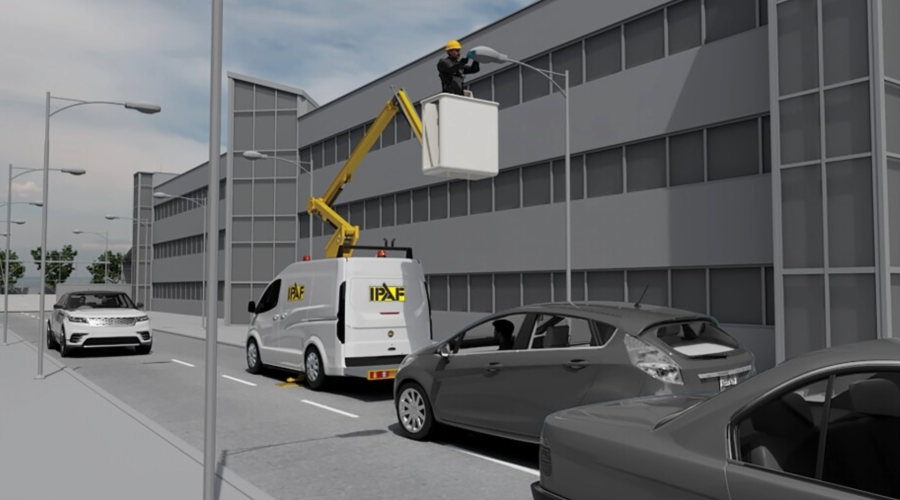How to stay safe on or near roadways

Resource also available in:
Although mobile elevating work platforms (MEWPs) remain one of the safest ways to access temporary work at height, IPAF’s accident data shows increased reports from the USA of MEWPs being hit by vehicles. Setting up MEWPs correctly when working on or near roadways helps reduce incidents and accidents.
Data captured by IPAF is almost certainly an underrepresentation of actual incident rates in the USA. Many accidents and incidents are not reported, so the number is likely to be even greater.
Who has Jurisdiction in the USA?
If an employee suffers a major injury or fatality because of a road traffic accident (RTA) while operating a MEWP, e.g., the MEWP is hit by a passing vehicle, multiple investigations may take place. Local police and possibly the Department of Transportation (DOT) would typically investigate the incident as an RTA, while the Occupational Health and Safety Administration (OSHA) would likely investigate from the workplace safety compliance perspective to determine whether any occupational safety standards were violated.
Current Planning Practices
USA contractors and MEWP users typically address highway or roadside work through a Job Safety Analysis (JSA) or a Job Hazard Analysis (JHA). These often incorporate traffic control measures in accordance with the Manual on Uniform Traffic Control Devices (MUTCD), which sets the standards for all traffic control devices in the USA, including traffic signs, road markings, and traffic signals.
Planning for Safe Work at Height on or Near Roadways
Inadequate planning, or a lack of planning altogether, increases the risk of accidents. Anyone who plans to work at height on or near roadways needs to be qualified to consider all eventualities.
Resources
- IPAF Global Safety Report 2025: www.ipaf.org/gsr
- www.osha.gov
- https://mutcd.fhwa.dot.gov
Previous safety campaign
Technical guidance
- IPAF Safe use of MEWPs to manage trees and vegetation | IPAF
- Safe Use of MEWPs in Public Areas | IPAF
- Safe Loading and Unloading of MEWPs on Public Highways | IPAF
- The Safe Use of MEWPs in The Vicinity of Power Lines | IPAF
- THE PRINCIPLES OF MEWP RECOVERY AND RESCUE | IPAF
- Developing a MEWP Safe Use Program Guide | IPAF
Toolbox Talks
- MEWP Rescue Plan Toolbox Talk | IPAF
- MEWPS Being Hit By Other Equipment While Elevated | IPAF
- OPERATING MEWPS ALONGSIDE ROADS TOOLBOX TALK | IPAF
- Spotter Duties & Function Toolbox Talk | IPAF
Andy Access
- Andy Access: Don’t get hit at height! | IPAF
- Andy Access: Operating MEWPs near roads | IPAF
- Andy Access: Use a spotter | IPAF
- Andy Access: Be street smart! | IPAF
Andy Access Short
